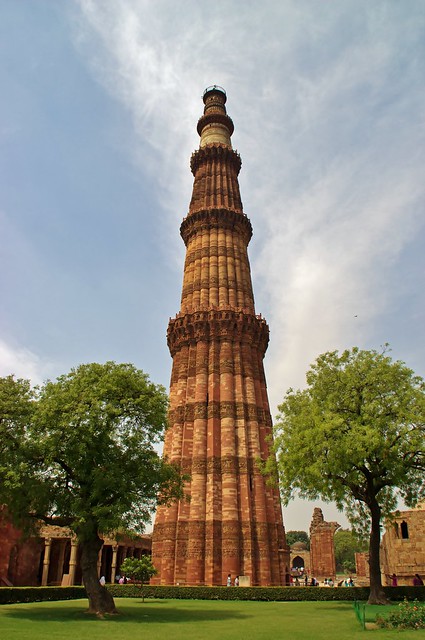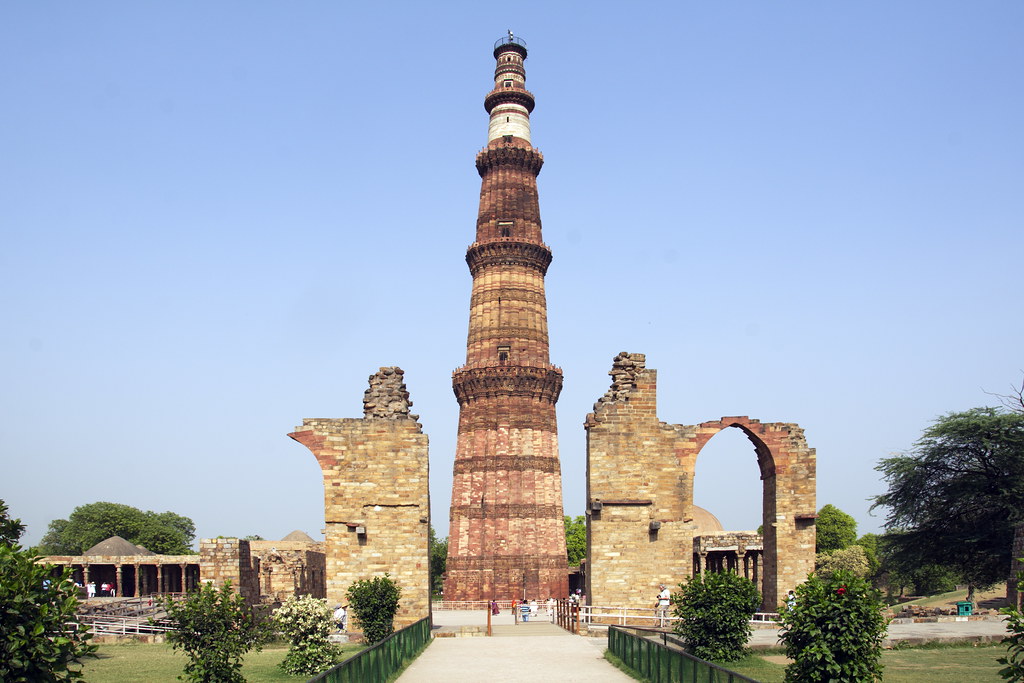The Qutb Minar, also known as Qutub Minar or Qutab Minar, stands as a towering testament to the architectural grandeur and historical significance of India’s past. This iconic minaret, part of the Qutb complex in the Mehrauli area of South Delhi, has captivated visitors from around the world for centuries. Built between 1199 and 1220, the Qutb Minar is not only one of Delhi’s most visited tourist attractions but also a UNESCO World Heritage Site. Its rich history, intricate design, and cultural symbolism make it a remarkable monument, embodying the fusion of Hindu and Islamic architectural traditions.
The Historical Significance of Qutb Minar

The Qutb Minar is a “victory tower” that marks the site of Delhi’s oldest fortified city, Lal Kot, which was founded by the Tomar Rajputs. This minaret, with its towering height of 72.5 meters, is the tallest brick minaret in the world. It consists of 399 steps and tapers from a base diameter of 14.3 meters to a peak diameter of 2.7 meters. The tower’s construction began under the rule of Qutb-ud-din Aibak, a deputy of Muhammad of Ghor, who laid the foundation of the Delhi Sultanate after Muhammad’s death. The construction was completed by Aibak’s successor and son-in-law, Shamsuddin Iltutmish, who added further stories to the structure.
Architectural Brilliance and Design

The Qutb Minar’s architecture is a fascinating blend of traditional Islamic elements with local Indian influences. The minaret’s shaft is fluted, and its surface is adorned with intricate geometric patterns and inscriptions in Arabic, showcasing the craftsmanship of the period. The balconies at the top of each stage feature superb stalactite bracketing, a hallmark of Islamic architecture. The minaret’s design is comparable to the 62-meter Minaret of Jam in Afghanistan, constructed around 1190, which shares similarities in its decorative motifs and inscriptions.
The architectural style of the Qutb Minar differs significantly from that of typical Middle Eastern mosques, reflecting the local Indic influences. Hindu laborers and craftsmen, unfamiliar with Islamic religious texts, were employed in its construction, resulting in a unique synthesis of Hindu and Islamic architectural elements. The materials, techniques, and decorative styles used in the construction of the Qutb Minar were influenced by the local architecture, particularly the Indic temples, leading to a structure that stands as a symbol of the cultural fusion that took place in India during this period.
The Qutb Minar’s Role in Cultural Celebrations

In recent years, the Qutb Minar has played a role in international cultural celebrations, highlighting its significance as a symbol of global unity. In September 2023, the monument was illuminated in the colors of the Mexican flag to celebrate Mexico’s 213th Independence Day, an event acknowledged by the Embassy of Mexico in India. Similarly, in October 2023, the Qutb Minar was lit up with the Turkish flag to commemorate the 100th anniversary of the Republic of Turkey, drawing special attention from the Turkish Embassy in New Delhi. These events underscore the Qutb Minar’s continued relevance as a cultural icon in contemporary times.
The Qutb Complex: A Historical Treasure Trove

The Qutb Minar is surrounded by several historically significant monuments within the Qutb complex. The Quwwat-ul-Islam Mosque, located to the northeast of the Minar, was built by Qutb-ud-Din Aibak in 1199 and is the earliest extant mosque built by the Delhi Sultans. The mosque’s courtyard is enclosed by cloisters, constructed from the columns and architectural elements of 27 Jain and Hindu temples that were demolished by Aibak, as recorded in an inscription on the mosque’s eastern entrance. The Iron Pillar in the mosque’s courtyard, dating back to the 4th century A.D., bears an inscription in Sanskrit and is a testament to the region’s ancient history.
Architectural Evolution and Restoration

The Qutb Minar has undergone several restorations and repairs over the centuries, particularly after suffering damage from natural disasters. In 1505, the minaret was damaged by an earthquake and subsequently repaired by Sikander Lodi. A major earthquake in 1803 caused further damage, leading to renovations by Major Robert Smith of the British Indian Army in 1828. Smith added a pillared cupola over the fifth story, creating a sixth story, but this addition was later removed in 1848 under instructions from The Viscount Hardinge, the then Governor-General of India. The cupola, now known as “Smith’s Folly,” was reinstalled at ground level to the east of the Qutb Minar, where it remains today.
Conclusion
The Qutb Minar is more than just a minaret; it is a symbol of the historical and cultural synthesis that shaped India during the medieval period. Its towering presence, intricate design, and historical significance make it a cherished monument that continues to inspire awe and admiration. As a UNESCO World Heritage Site, the Qutb Minar not only attracts tourists from around the world but also serves as a reminder of the rich cultural heritage and architectural brilliance of India. Its role in contemporary cultural celebrations further cements its place as a symbol of unity and international cooperation, making the Qutb Minar a timeless icon in the annals of history.
